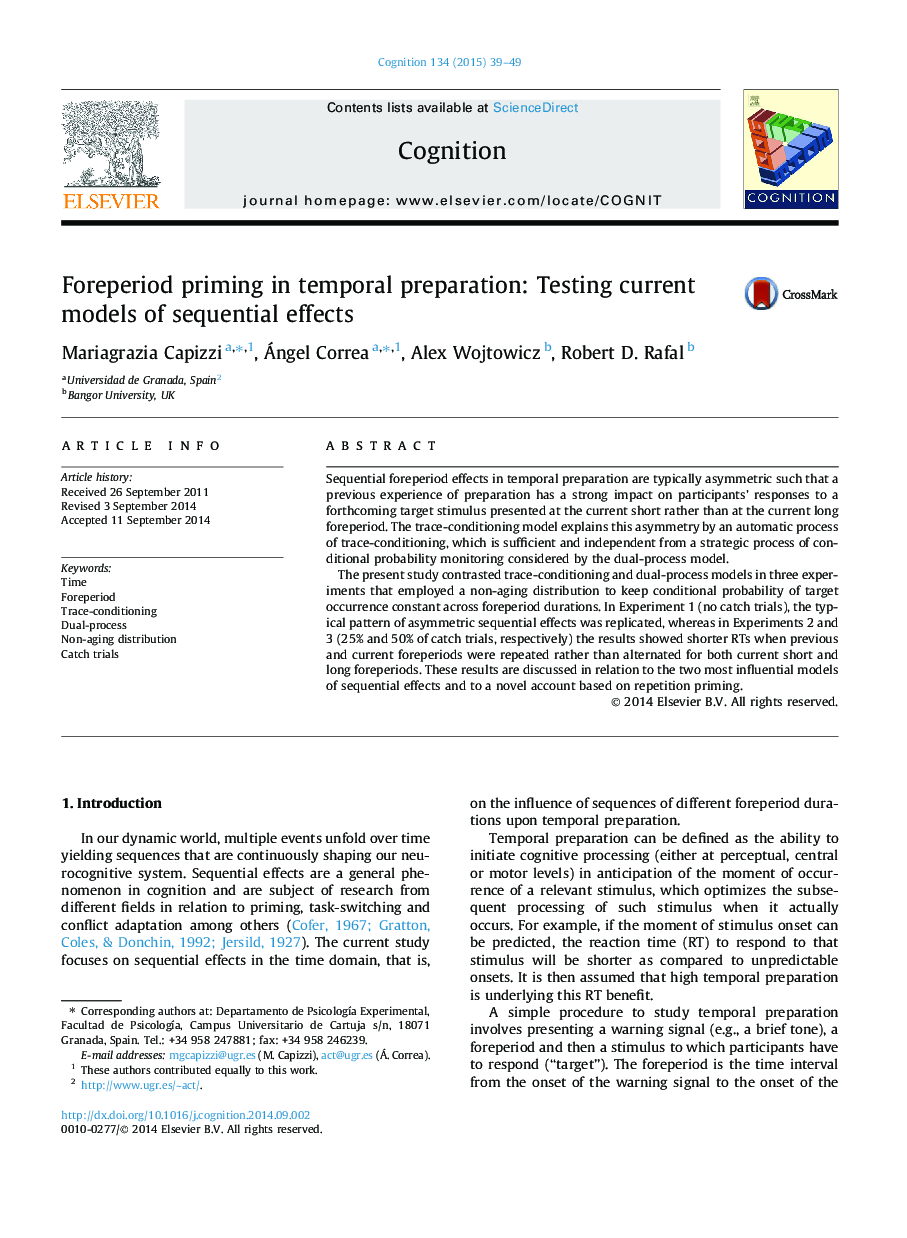| Article ID | Journal | Published Year | Pages | File Type |
|---|---|---|---|---|
| 7287530 | Cognition | 2015 | 11 Pages |
Abstract
The present study contrasted trace-conditioning and dual-process models in three experiments that employed a non-aging distribution to keep conditional probability of target occurrence constant across foreperiod durations. In Experiment 1 (no catch trials), the typical pattern of asymmetric sequential effects was replicated, whereas in Experiments 2 and 3 (25% and 50% of catch trials, respectively) the results showed shorter RTs when previous and current foreperiods were repeated rather than alternated for both current short and long foreperiods. These results are discussed in relation to the two most influential models of sequential effects and to a novel account based on repetition priming.
Keywords
Related Topics
Life Sciences
Neuroscience
Cognitive Neuroscience
Authors
Mariagrazia Capizzi, Ángel Correa, Alex Wojtowicz, Robert D. Rafal,
